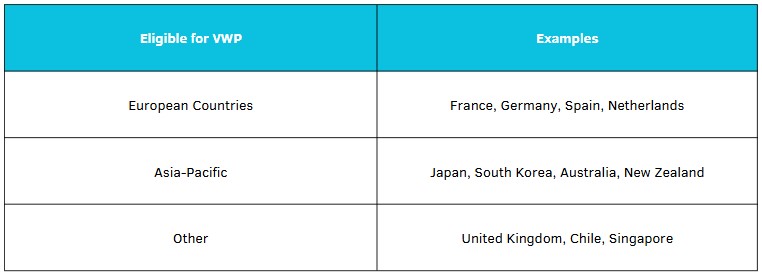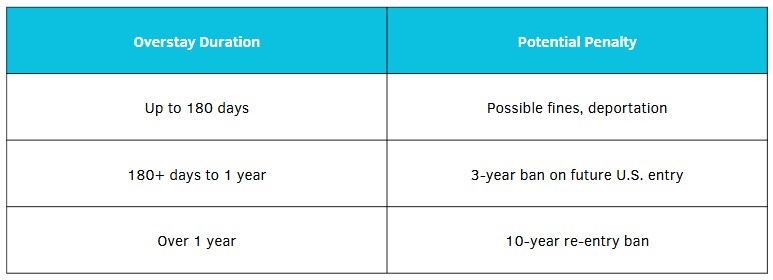
Planning a visit to the United States is thrilling, with so much to see and do across the country’s vast landscape. But if you’re visiting as a tourist, understanding the 90-day rule for stays under the Visa Waiver Program (VWP) is essential to avoid complications with your travel plans. This blog post breaks down the details of the 90-day rule, who it applies to, the costs involved, and the best tips to make sure your U.S. visit goes smoothly.
What is the 90-Day Rule?
The 90-day rule is a regulation under the Visa Waiver Program (VWP) that allows tourists from certain countries to visit the U.S. for up to 90 days without needing a visa. It’s designed for short stays, including tourism, business, and certain family visits.
To use this option, eligible travelers must apply for an Electronic System for Travel Authorization (ESTA), which permits travel under the VWP. ESTA approval allows travelers to enter the U.S. multiple times within two years, provided each visit is under 90 days.
Key Points of the 90-Day Rule:
- Only applies to citizens from VWP countries.
- Covers short-term travel for tourism, business, or family visits.
- Requires an approved ESTA application for entry.
Who Qualifies for the Visa Waiver Program?
The Visa Waiver Program is available to citizens from 40 countries, including most European Union members, as well as Australia, Japan, South Korea, and New Zealand. If your country isn’t on the list, or if you want to stay longer than 90 days, you’ll need to apply for a different visa, such as the B-2 Tourist Visa.

For visitors from non-VWP countries, the B-2 Tourist Visa generally allows stays of up to 6 months per visit, with the possibility of requesting an extension if needed.
How to Calculate Your 90-Day Stay in the U.S.
To stay within the rules, accurately counting your 90-day period is essential. Each calendar day from the date of entry counts toward your total, including partial days.
1. Count Each Calendar Day: The day of your arrival counts as Day 1, and every subsequent day (including weekends and holidays) is part of your 90 days.
2. Plan to Depart on or Before Day 90: Leaving by midnight on the 90th day will help you avoid overstaying.
3. Use Countdown Apps or Set Reminders: Online countdowns can help track “90 days from today” based on your arrival date to avoid any issues.
Here’s an example timeline:

If you need to return to the U.S. after your 90-day stay, note that re-entering too soon or too often may prompt scrutiny at customs.
Costs Associated with the 90-Day Visa Waiver
The 90-day rule offers a budget-friendly option for short-term visitors, as long as they use ESTA:

The ESTA application fee is $21 USD, which covers two years or until your passport expires. If you need to stay longer than 90 days, applying for the B-2 Tourist Visa may be a better fit, allowing for up to six months per visit.
How Soon Can You Return to the U.S. After 90 Days?
While the 90-day rule doesn’t have a strict waiting period between visits, re-entering the U.S. immediately or frequently may lead to closer inspection by customs officers. If customs officials suspect that you are attempting to use the VWP to live in the U.S. short-term, they may deny entry.
Tips for Re-Entry After 90 Days:
– Allow a Gap Before Returning: Waiting several weeks or even months between visits can help avoid re-entry complications.
– Provide Evidence of Ties to Your Home Country: Carrying documents such as employment verification or proof of property ownership shows your intent to return.
– Limit the Duration of Each Visit: Frequent or extended stays may be seen as an attempt to live in the U.S. on a temporary visa.
If you’re interested in longer visits, consider applying for a B-2 visa, which allows more flexibility and is intended for extended tourism.
What Happens If You Overstay the 90-Day Limit?
The U.S. takes visa regulations seriously, and overstaying the 90-day limit under the VWP can result in several penalties:
– Deportation: Overstaying by even a few days can lead to deportation.
– Travel Bans: An overstay can lead to a 3- or 10-year ban on re-entering the U.S., depending on the length of the violation.
– Future Visa Complications: Overstays are documented and may make obtaining future visas or ESTA approval difficult.

To avoid these consequences, make sure you plan your departure carefully and consider setting reminders or alarms for the day before your visa expires.
Frequently Asked Questions (FAQ)
- Does leaving and re-entering the U.S. reset my 90 days?
No, simply leaving and re-entering the U.S. does not reset the 90-day count. Customs officers may question frequent re-entries, especially if there is minimal time between stays. - Can the 90 days be extended?
Under the VWP, extensions are generally not possible. If you need more time, a B-2 visa may be a better option. - Are there exceptions for emergencies?
Emergency extensions may rarely be granted for urgent situations, but these are not guaranteed and are evaluated on a case-by-case basis. - Can I work under the VWP?
No, the VWP only allows for tourism, business meetings, and certain family visits. Employment requires a specific work visa.
Alternative Options for Longer Stays: The B-2 Tourist Visa
For those who may need more than 90 days to enjoy their U.S. visit, the B-2 Tourist Visa is an option worth considering. Here’s what to know:
1. Application Process: Unlike the VWP, applying for a B-2 Tourist Visa requires an in-person interview at a U.S. embassy or consulate.
2. Duration: B-2 visas allow stays of up to six months, with possible extensions if more time is needed.
3. Cost: The B-2 Tourist Visa fee is $160 USD.
4. Benefits: Provides more flexibility for longer stays and is valid for multiple entries over a period of up to 10 years, depending on the issuing country’s agreement with the U.S.
When applying, be prepared to explain the reason for your extended visit, and provide proof of strong ties to your home country, as this visa requires more documentation.
Key Tips for Following the 90-Day Rule
To make the most of your U.S. visit without running into visa issues, here are some final tips:
– Track Your Days: Keep a record of your entry and exit dates, using apps to track “90 days from today.”
– Prepare for Re-entry: If you plan to re-enter the U.S., space out your visits and bring supporting documents that show you intend to return home.
– Double-Check Your Plans: Ensure you won’t accidentally go over your 90-day limit by leaving a few days before Day 90.
– Check ESTA Validity: Remember that ESTA is valid for two years, so you won’t need to reapply unless your passport expires.
Following these simple guidelines will help you stay compliant and enjoy a stress-free stay in the United States.
Understanding the 90-day rule is essential for anyone planning a short-term visit to the U.S. Following the guidelines and staying within the 90-day limit will make your travel experience smoother and help you avoid any complications related to overstaying. For those needing a longer stay, the B-2 Tourist Visa provides an excellent option, ensuring that you can enjoy your U.S. vacation with peace of mind.
Planning ahead, keeping track of your days, and respecting the entry requirements will allow you to make the most of your U.S. adventure!



